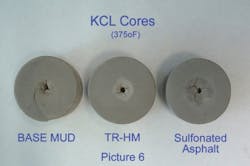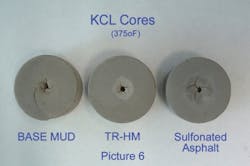Electric subsea controls coming of age
Sigurd Moe - FMC Technologies
An electric control system uses electricity for power rather than hydraulics. Because safety is a priority, FMC has developed a low-voltage approach using existing low-power umbilical and connector technology. This provides a safer operating environment and prevents corrosion risk from stray high-voltage currents. Trickle-charged batteries accumulate energy subsea. With the subsea batteries, only low power and low voltage supply from the topside is required, typically less than 150 watts. Actuator electric motors can produce high power, typically up to 3,000 watts or more for valve operation, when powered locally by the batteries.
This also is backward compatible with hydraulically powered systems so adding new wells to an existing field is straightforward from a controls perspective. No hydraulic infrastructure is required to operate these systems and they feature the same topside communication as a conventional control system.
A “plug and play” philosophy has been adopted in FMC’s electric system so actuators can be added and/or retrieved by an ROV during the engineering, testing, and operational phases without requiring any specific engineering. This also means valve actuators can be repaired using an ROV. The electric system’s redundant control modules are retrievable individually so the system can be repaired without shutting down the well. This improves on traditional electro-hydraulic systems, which normally contain the redundancy within one large control module and require well shutdowns during repair and retrieval.
Shutdown is different from an electro-hydraulic system where bleed-off of the hydraulic power causes a spring in the actuator to close the valve. In an electric system, the base case approach is to use redundancy and a safety certified controller plus the batteries for shutdowns. This eliminates large actuator springs subsea. High reliability lithium ion batteries developed for space applications are used. These batteries are small, easy to integrate, have long life cycles, and are maintenance-free, all of which means lower costs. For some systems, such as those with rapid closure requirements, an electrically latched spring may be required to power the shutdown function.
Electric solutions, so far
In the years since FMC began development of electric solutions, options for several subsea applications have been released. The first application, installed in 2001 and 2002, was an electric choke actuator for Statoil’s Statfjord Satellite project. This consists of electric choke controls and a sand detection system connected to a central electric control module. The field originally featured only ROV-operated chokes, and production adjustment of individual wells could not be done as frequently as the operator wanted. Installing electrical actuators and sand detectors proved efficient. The system was installed without production shutdown and works with the existing electro-hydraulic controls. It has had nearly 100% up-time to date. Electric choke actuation is efficient and simple. Traditional electro-hydraulic choke controls may use stepping actuators. Each stepping actuator requires two hydraulic control valves in the electro-hydraulic control module, and some 200 steps (hydraulic pulses) to travel from fully closed to fully open.
In StatoilHydro’s Norne Retrofit project in the North Sea, FMC’s actuator system operates manifold and pigging valves as well as the chokes. The electric manifold valves were a cost-efficient retrofit for Norne. The electrical equipment that replaced manually and hydraulically operated valves and chokes gives better response time for the chokes and enables free routing of existing and new infield wells. It also liberated hydraulic lines in an existing umbilical for use as injection chemical lines. Capital expenditures for the field extension were reduced significantly. Electric manifold valve control is attractive in systems where control modules can be eliminated from the manifold to completely eliminate the hydraulic distribution for the manifold which improves delivery time, simplifies testing, and reduces cost.
Electric solution flexibility is demonstrated at StatoilHydro’s Gjøa project where some of the electro-hydraulic subsea control modules also control an electric actuator. These hybrid systems give the benefits of both traditional and new technology.
As part of the StatoilHydro/FMC joint technology development project MMX and in cooperation with DEMO 2000, an electric tree for the Tyrihans field is currently in development and scheduled for installation in late 2010. The project involves conversion of one electro-hydraulic tree in the ongoing Tyrihans development to electric operation. This is the next step in the development chain from choke control and manifold control. The main components of this system include the electric subsea control module, electric actuators, and a subsea harness to connect these devices. The latest generation of this is a fully computerized electric control system. It monitors the state of the equipment and continuously runs self-tests. These features also help achieve the required Safety Integrity Level (SIL) according to IEC 61508.
A total of 30 electric subsea control modules and 68 electric actuators for fields in the North Sea, Brazil, and Australia have been ordered since FMC began developing its electric technology.
The future of electric subsea systems
FMC believes it is best to switch from existing hydraulic system to electric solutions using a hybrid electro-hydraulic approach that leverages electric technology when advantageous. Electric solutions make sense where the benefits of improved control, safety, profitability, and reduced environment risk can be best realized, as shown with retrofit and greenfield choke, manifold, and processing valve control.
Opportunity exists to enable a range of emerging electric technology field developments, including full ultra deepwater and ultra long-distance tiebacks, advanced process control for subsea separation, as well as anti-surge control for subsea gas compression.
A hurdle for the integration of all-electric technology is the lack of electrical downhole safety valves, but several companies are at work to close this gap. Until electric downhole safety valves are qualified and available, hybrid solutions will continue to fill the gap.
When does electric technology make sense?
Arctic conditions make oil and gas operations a huge challenge. With an estimated 25% of the world’s undiscovered hydrocarbons to be found in this region, it will continue to attract operators, regardless of the obstacles.
Electric solutions have advantages in arctic regions. For one thing, there is no fluid discharge to the sea. Elimination of hydraulic fluids also removes logistics and expense issues. Operators say several percentage points of subsea field operating expenditures relate to hydraulic fluid consumption.
Electric technology suits long standoff distances and ultra deepwater fields, as supply of hydraulics is complex and expensive for these applications. Electric solutions for greenfield applications eliminate topside hydraulic power units as well as control umbilical hydraulic supply lines. The cost saving can be significant, especially for long distances.
Installation costs of electric solutions are cheaper than traditional hydraulic systems, and because the interfaces are simplified, electric solutions reduce system engineering and testing time.
Condition monitoring and product optimization also are improved with electric solutions, as are flexibility, scalability, and operability. Electric solutions also benefit operators when rapid and accurate control is required.
Arctic, deepwater, and long-distance fields demand conservative development approaches because of the high investment costs to develop them. This raises the risk when introducing new technology. With this in mind, FMC has implemented electric technology in stages, starting with obvious and simple applications such as choke and manifold valve actuation. For these applications, risk is low and cost and operational benefits are significant, especially in the retrofit scenarios.

